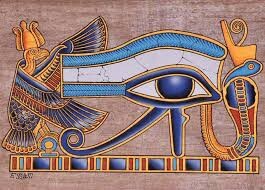In a world where envy and jealousy seem as timeless as the stars, certain symbols have persisted through centuries as guardians against these invisible threats. Among these, the Khamsah hand and the Evil Eye charm stand out, embodying a rich tapestry of cultural beliefs and practices that transcend borders and generations.
The Khamsah, often recognized by its distinctive hand shape, sometimes adorned with an eye at its center, is steeped in history. While it might initially appear as an enigmatic floral or animal form, it is unequivocally a stylized human hand. This symbol, embraced by both Jewish and Muslim cultures, is believed to ward off the Evil Eye, a notion deeply embedded in societies across the Middle East and North Africa.
The Khamsah’s history is as intricate as its design. Known as the Hand of Fatima in Islamic tradition, named after the prophet Muhammad’s daughter—and the Hand of Mary in some Christian contexts, it serves as a potent emblem of divine protection. Its name derives from the Arabic word “khamsah” and the Hebrew “hamesh,” both meaning five, referencing its five fingers. Despite its religious connotations, the Khamsah transcends specific faiths, standing as a universal symbol against malevolence. Traditionally, the Khamsah is worn as an amulet or displayed in homes, its eye motif believed to deflect negative energy. This belief is closely tied to ancient superstitions about the Evil Eye—a curse thought to be unleashed through envious glances. The eye, often depicted in striking blue to counteract this curse, transforms the Hamsa into a protective talisman.
The Evil Eye is not just a myth but a pervasive cultural phenomenon. Historians trace its origins back to the dawn of civilization, with early talismans discovered in ancient Mesopotamia, carved to protect against its ominous glare. The concept is simple yet profound: a glance borne of envy can transmit misfortune or harm, affecting individuals and even objects. This belief has woven itself into the fabric of countless cultures, from the Mediterranean to the Middle East.
Islam acknowledges the Evil Eye, known as “Al-Ayn,” as a real phenomenon. The Quran, while not explicitly mentioning the Evil Eye, advises Muslims to seek protection from harm through prayer, as seen in Surah Al-Falaq (113:1-5), which calls for refuge from the harm of the envier.
In Christianity, the concept of envy is addressed in the New Testament. James 3:14-16 warns against the dangers of jealousy, drawing parallels to the destructive influence of the Evil Eye.
Judaism references the Evil Eye as “Ayin Hara,” cautioning against the envy of others, as illustrated in Proverbs 23:6-7, which advises caution against those with an “evil eye.”
Throughout history, the belief in the Evil Eye and the protective power of the Hamsa has influenced cultural practices and notable events:
The Ottoman sultans, ruling over a vast and diverse empire, surrounded themselves with talismans to protect against the pervasive envy within their courts. The Khamsah was a popular choice, believed to guard the sultan from the envy of rivals and ensure a stable reign. During the siege of Constantinople in 1453, Sultan Mehmed II famously wore a Khamsah amulet. His advisors, well-versed in mystical traditions, believed it would protect him from the Evil Eye cast by the city’s defenders, who were desperate to maintain their hold on the great city.
In Spain, during the Golden Age of Jewish culture, artists and scholars wove the Khamsah and Evil Eye motifs into their works. This era saw a flourishing of intellectual and artistic expression, with the symbols serving as reminders of divine protection amid a time of great cultural exchange and occasional persecution.
In contemporary times, public figures like Gigi Hadid and Meghan Markle have embraced the Khamsah in their fashion choices. This not only highlights the symbol’s enduring appeal but also its ability to cross cultural and generational boundaries, integrating into modern narratives of protection and spirituality.
Today, these symbols have moved beyond their origins, becoming part of a broader cultural lexicon. The Khamsah and the Evil Eye have been adopted into mainstream fashion and popular culture, evolving from sacred relics into stylish accessories. Yet, despite their modern adaptations, they retain their core purpose—shielding the wearer from unseen forces.
Theologians concur that safeguarding oneself from the harm of the evil eye involves prayer and leading a prudent life. This includes exercising discretion in sharing stories about one’s achievements or plans, as well as adopting a measured approach to living and spending.
In a rapidly changing world, the Khamsah and the Evil Eye remind us of humanity’s enduring need for protection against intangible threats. As long as envy exists, these symbols will continue to evolve, offering comfort and security across cultures and generations. Whether as a piece of jewelry or a decorative item, they carry with them centuries-old traditions and a shared human experience, bridging the past with the present.





